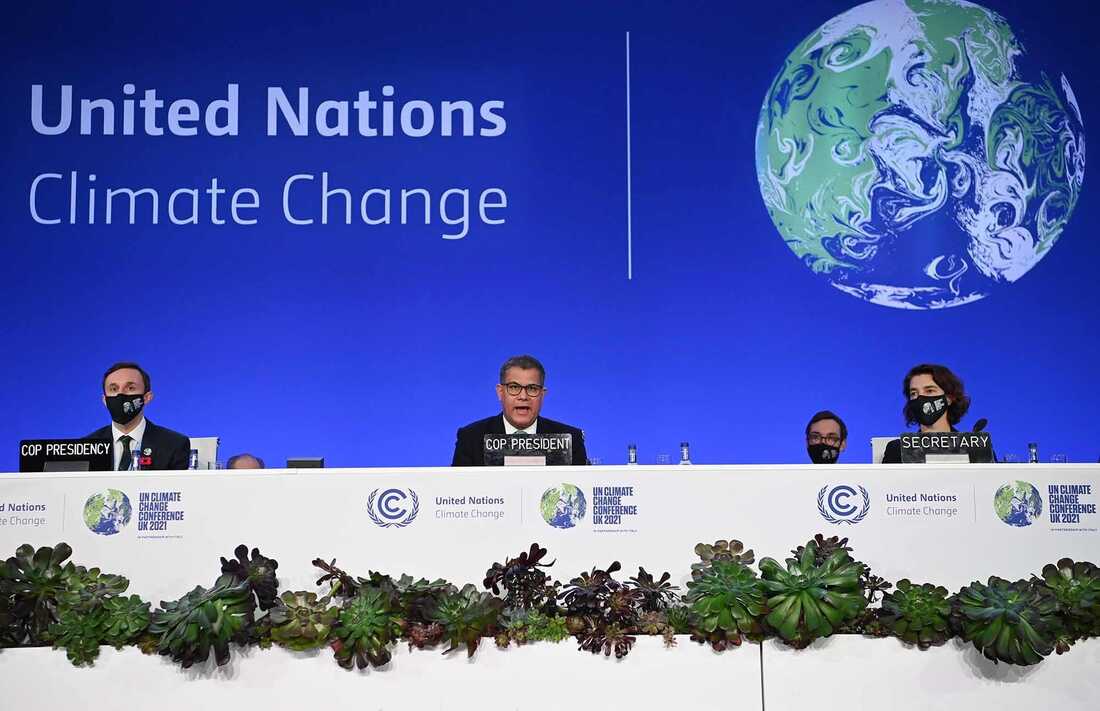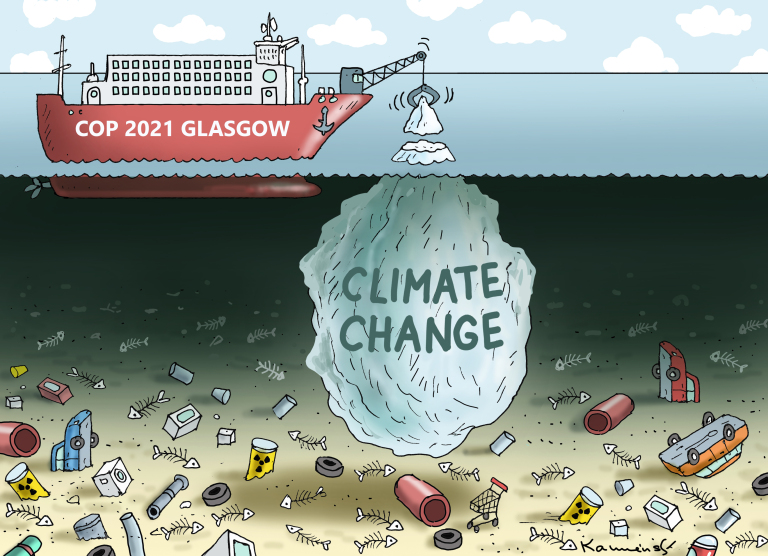December 6, 2021
The UN Climate Conference of 2021
Looking Back at COP26, from New Scientist, by Adam Vaughn, Nov. 13, 2021

COP26 had all the promise of setting goals for the 197 countries that make up the Partners. The UK, in partnership with Italy, was chosen as this year’s location for the Presidency of COP26. The event was held at the Scottish Event Campus (SEC) in the heart of Glasgow, from Sunday, October 31 to Saturday, November 13.
Some magic has always been needed to bring the Partners to a suitable agreement but this year, 2021, was a bit more urgent. 2020 was seen as a banner year but there was no meeting due to COVID. Therefore this year’s “Glasgow Climate Summit” became an important year to get things done. Alok Sharma, a native of India and a British government leader in various capacities since 2010, presided over the COP 26 proceedings.
The COP26 goals:
These have undergone some change over time. Currently, the four main goals are:
- To secure global net zero emissions by 2050.
- To protect communities and natural habitats, including ecosystems and biodiversity, by raising funds and supporting those nations most at risk.
- To create an annual fund of $100 billion to assist lower income countries.
- To improve the process of working collaboratively as governments, businesses, and civil societies.
The Important Agreement Issues:
Progress at any COP can be measured in semantics when spelling out commitments:
- The use of the term “phase-down” rather than “phase out”, with respect to coal, was demanded by India.
- The use of the term “fossil fuel” was finally put into the agreement. It was purposely left out of the Paris Agreement.
- The rules of Article 6, which were designed to help countries meet their goals. They are an important part of the Paris Agreement that would allow things like carbon markets for countries or companies to buy and sell credits, for example, Cap and Trade in California. There are several complications that couldn’t be worked out and consensus could not be reached at this conference.
- A $100 billion per year fund for financial assistance to “developing countries” was promised by 2020. Its purpose is to support the efforts of these less-well-off countries to adapt and mitigate against the effects of climate change that they are already experiencing. It has now been set back to 2023.
- Ending subsidies for fossil fuel production was agreed to by most of the partners but they failed to choose a date. Over $420 billion is spent by world countries on subsidizing non-renewable energy sources. There are two forms of subsidies:
- Production subsidies – direct payments or allowing tax breaks to fossil fuel producers.
- Consumption subsidies – setting prices at the gas pump to reduce costs.
- China and India, both heavily invested in coal, do not recognize the year 2050 as their time limit. It may take more or less time, according to their authorities.
- A pledge to end deforestation by 2030 was signed by 141 countries by the end of this year’s session. Such an attempt was also made in 2014, but countries like Brazil and Indonesia made a shambles of that program in the years following. The difficulty of stopping Brazil from cutting trees in the Amazon Forest to make more range land for beef cattle, and to bring a halt to Indonesia’s jungle clearing for palm oil, soya, and cocoa has proved to be extremely challenging. Russia also refused to go along with this pledge. This new effort toward halting deforestation has a $19.2 billion dollar budget making it more promising.
- Reducing methane, a major contributor to climate change, has been singled out by the U.S. and the E.U. as worth pursuing. President Biden has already called for stopping leakage in oil field pipes, and using new technologies in agriculture and in land fills. Over one hundred countries have signed on to this.
Where Does This Leave Us?
 Can we sleep at night knowing it was a job well done? One could say positive changes were made but bolder change is what is needed. The stage is set for future COPs, as climate emergencies continue to mount and cost more each year.
Can we sleep at night knowing it was a job well done? One could say positive changes were made but bolder change is what is needed. The stage is set for future COPs, as climate emergencies continue to mount and cost more each year.
The younger generation made their presence known at COP26. Greta Thunberg and her “blah, blah, blah” criticism of the proceedings gave license to youth to boldly express themselves and defend their future world. They came from every nation and demonstrated with their 100,000-plus allies. Their awareness of the importance of climate change in their lifetimes makes them a force the COP partners will have to continue to reckon with.
One thing for sure is that the world will be changed as the climate warms and the ice continues to melt at the poles. What this does to atmospheric and oceanic currents, global heat exchange between the poles and the equator, our seasons, tides, sea level rise and life on Earth can best be determined by scientists but something we must all think about.
We have lots of technologies in the works that are able to filter C02 out of factory chimneys, and others that will draw C02 directly out of the atmosphere and stash it deep into the Earth (“Carbon Capture and Sequester”). New technologies will be put in place to help detect and halt methane and other greenhouse gases from escaping into our atmosphere. There is new emphasis on material reuse, and circular economies that retain the value of structures after many years of use. There are now many green commodities: green hydrogen for energy, green steel, and green cement for construction. The younger generation is already looking forward to sustainable living under a global agreement of some sort. There will be consequences for the world’s slow actions but there is good reason to believe humanity will survive if they continue to work together.
Next year’s UN Climate Conference, COP27, November 7–18, 2022, will be held in Sharm al-Sheikh, Egypt, a remote resort town on the Sinai Peninsula.
Sources of Bay Area Activities and Events
Friends of the Earth – located at the David Brower Center, Berkeley.
350BayArea – Includes other 350.org branches in the Bay Area.
Planet Drum – San Francisco bio-region awareness center.
Ecology Center – Berkeley sustainability center.
David Brower Center – The environmental center in Berkeley.
Sunflower Alliance – Bay Area umbrella organization for activism.
Sierra Club San Francisco – Bay Area website.

The End